This post may contain affiliate links. This just means I may receive a small commission at no extra cost to you for helping them promote their product or service. I don’t endorse any services I don’t personally use or recommend.
A self-drive East Africa Road Trip adventure through Kenya, Uganda, Rwanda, and Tanzania.
Are you looking to safari for cheaper than the package tours? Want your own personalized experience without being at the whim of other group members? Or maybe you’re just looking for an adventurous way to explore this region of the African continent. Either way, choosing a self drive East Africa Road Trip was the best decision we made when planning our time in this region of the world. This is our safari route through the region and the absolute best way to experience the four countries independently.
One Great Big Guide to Road-Tripping East Africa
Get ready for a lot of information.
Because traveling overland across four African countries takes time and coordination. This is the route we took across East Africa (with some modifications to improve it) and everything we wish we knew beforehand.
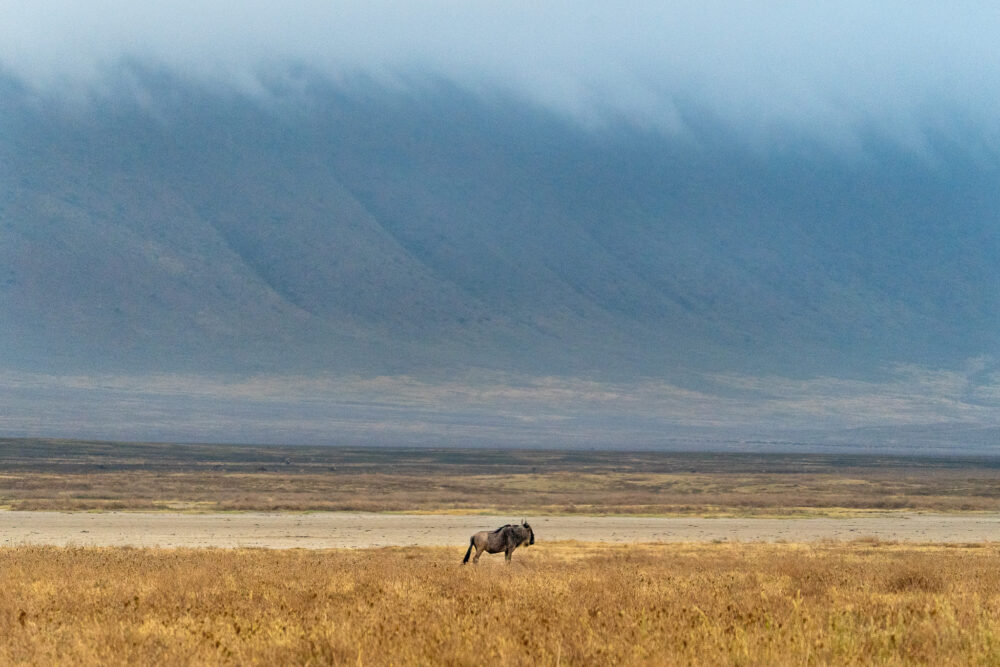
Important Information Before Your Self-Drive East Africa Road Trip
Let’s cover the basics first. These are the things you need to know before you go.
Visa Information
With Kenya beginning to migrate away from the East African Tourist visa, you may need several visas depending on your itinerary.
If you start in Nairobi, Kenya, you will need to apply for an ETA valid for single entry into Kenya here. Then, the East African Visa (valid in Uganda, Rwanda, and a return trip to Kenya) here. Tanzania has its own visa entirely and you can apply for that here.
If you DON’T begin your trip in Kenya, then you can skip the ETA and just use your East African Visa and Tanzania Visa.
How Long Does This Self-Drive East Africa Road Trip Take?
I would recommend setting aside 45 days to complete this route. Obviously this can be tailored to fit your tastes, maybe you would like less time spent in National Parks or want to skip the more remote reaches of Uganda — the choice is really up to you.
But to cover all four countries (at a quick pace), I would not plan less than 45 days, ideally closer to 60 for a trip of this kind.
Read More: If you’re looking for shorter single-country portions of this route, check out our 12-day in Tanzania & 21-days in Uganda blog posts.
What Time of Year Should I Do This East Africa Road Trip?
You should only plan to self-drive in East Africa during the dry season. This is typically from July to Early October.
In late October, the “short rains” come before ushering in the second (although slightly less dry) season of Nov-Jan.
It’s universally decided that Aug/Sept is the absolute best time to self-drive.
Where Do I Rent My Car?
There is no shortage of rental companies within the four countries. The most highly esteemed and reliable is Road Trip Africa. It is also the most expensive. Expect to pay around $200 daily for a land cruiser rental in peak season. If you have a small group, this is definitely the best option.
We have used them in the past for Tanzania and found the kit they provide to be the best in East Africa. Table, chairs, sleeping gear, cookware, guidebooks, everything you could possibly need!
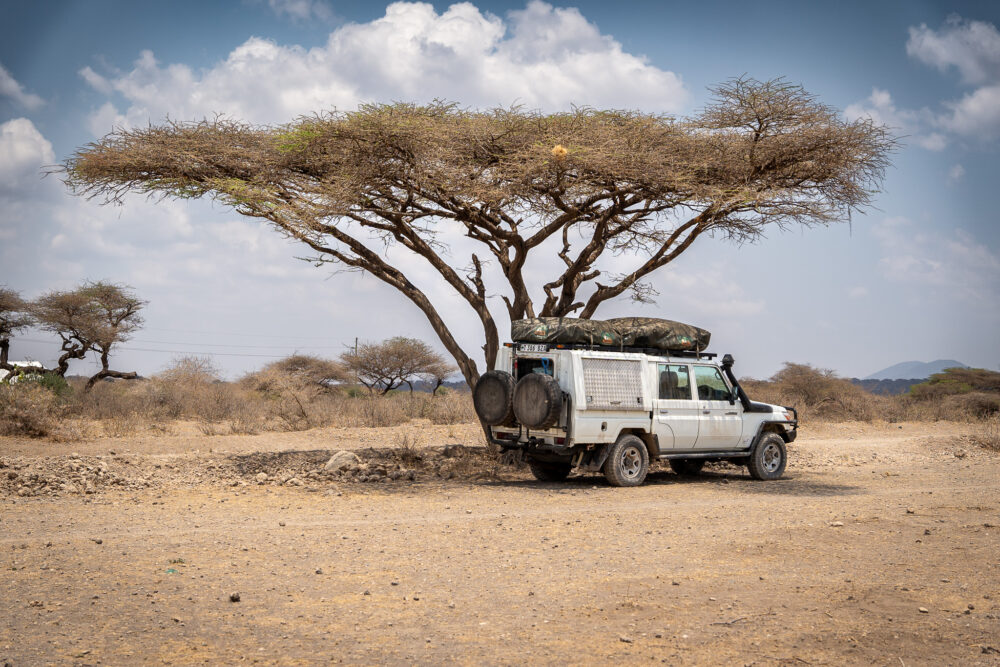
We also used Active African Vacations. This is a local company with a small fleet of vehicles. We hired a Landcruiser Prado for $80 per day with a rooftop tent. The kit is hodge-podge, but you can guarantee some assortment of cookware, chairs, and sleeping bags.
I can recommend both companies for their excellent and responsive customer service and network of mechanics.
What Countries Can I Visit with my Rental Car?
As long as your rental company fills out the correct paperwork and gives you the “yellow card” of passage — you can visit Tanzania, Kenya, Rwanda, and Uganda with ease. This is a common road trip route, and the process at the land borders is very streamlined.
What Kind of Car Do I Need?
You will need a 4×4 vehicle to complete this trip. But the question is — do you need a Landcruiser or can you get by with a RAV4. Obviously, the Landcruiser is a much more expensive option.
The Landcruiser is, without a doubt, the preferred choice. But you can get by with other vehicles easily, I wouldn’t choose anything with lower clearance than a Prado if selecting an older vehicle. The roads in Serengeti and Uganda require it.
Note: You ARE going to want a car with UGANDAN plates to travel in all four countries. I’ll explain in detail below.
Ground tent or Pop-Tent?
Since you already should opt for the Prado or better, these vehicles can easily be equipped with a pop-tent, which I recommend.
Most nights in national parks, we had lions, elephants, and hippos in our camp, and the protection of being on top of the car was definitely appreciated.
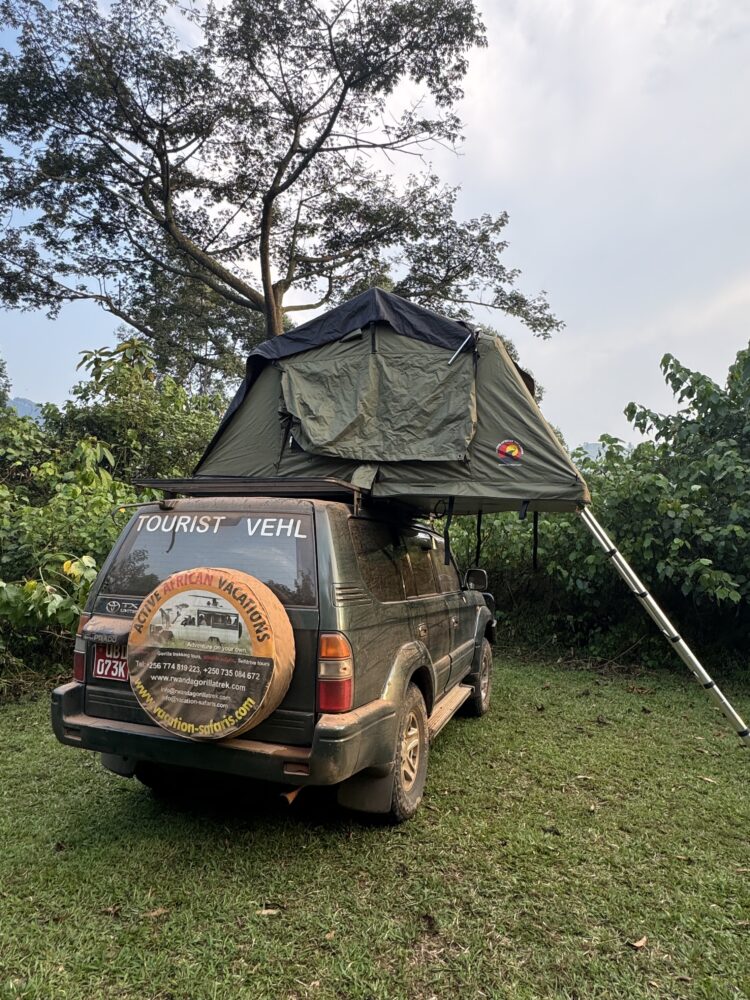
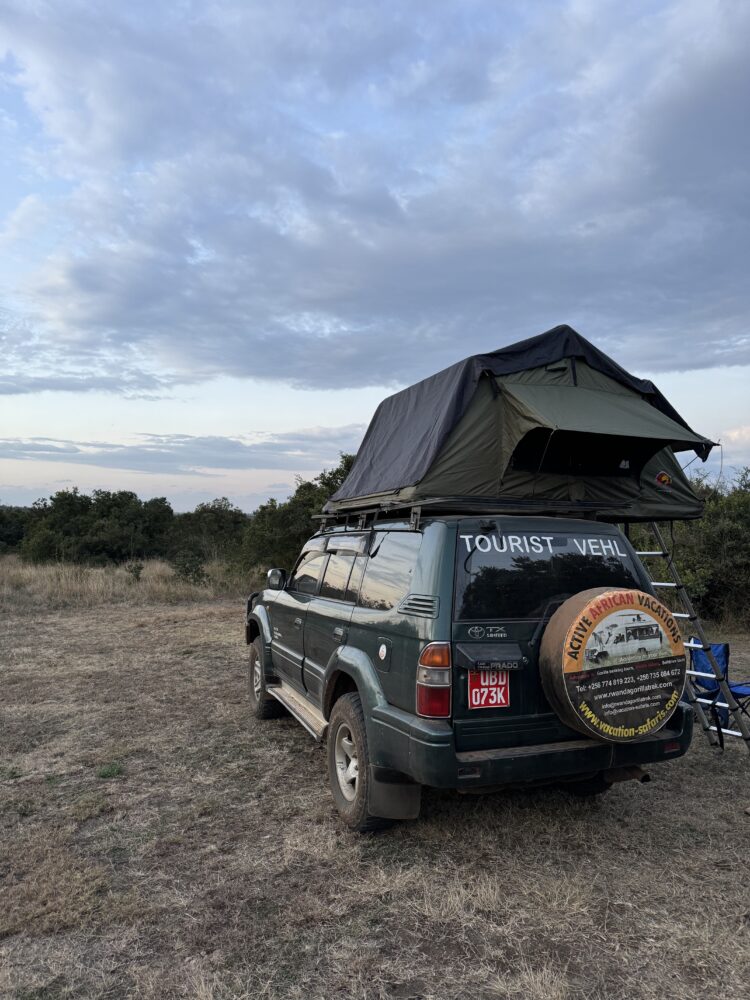
Which Country Should I Start In?
I recommend you start your journey in Kenya if you plan to see ALL the destinations on this list.
The only caveat to that is you will need to import your car from Uganda and have it meet you in Nairobi, Kenya. This usually costs about $150. This means you will also have to pay for a Kenya ETA. So for two people the additional cost is about $210. But as Nairobi often has cheaper flights into the country and this allows you to visit Jinja + Lake Victoria without backtracking and adding days to your rental, it could still shake out to be cheaper.
Why Do I Need Ugandan License Plates??
Can’t I just rent a car in Nairobi and save the hassle? No. Here’s why that’s a bad idea.
Uganda National Parks charges an additional $100 per entrance for all foreign-plated vehicles. Ugandan plates pay $8. Considering you’ll want to self-drive in probably 3-5 Ugandan parks this is a huge added cost. Please do yourself a favor and get a car with Ugandan plates.
Other Car Issues: If you have a Kenyan-plated vehicle, Tanzania will not allow it into parks.
Apps, Books, and Items That Will Come in Handy
- Bradt Overland Africa Guidebook
- Garmin Mini In Reach 2
- Maps.me
- IOverlander
- Cocoon Sleeping Liners
- Mosquito Net
- Earplugs
- Kenya Road Map
- Uganda Road Map
- Tanzania + Rwanda Road Map
Quick Tips For Overland Travel in East Africa
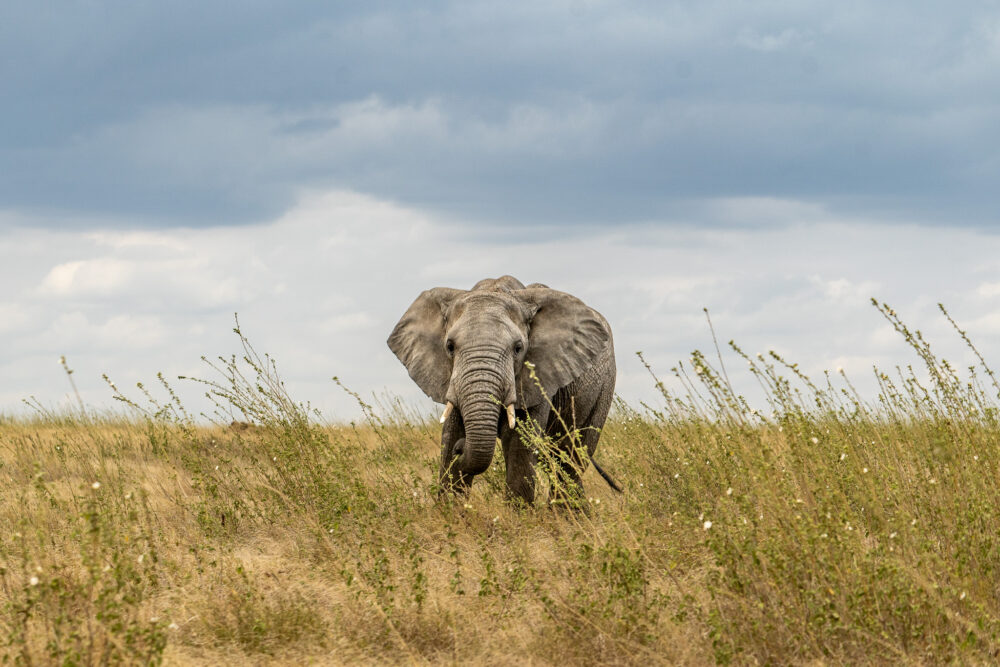
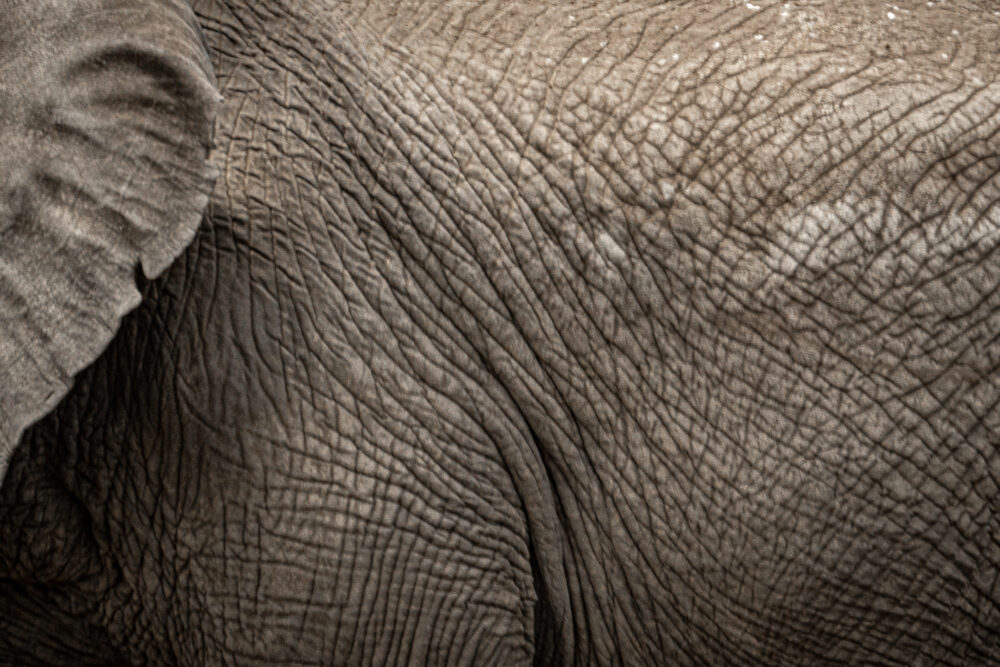
1. Keep small bills in the glove compartment of the car and hide all other cash.
We have never had any issues, but we have been told at police checkpoints that bribery is common.
2. ATMs will only be available in major cities. Stock up on cash.
KCB in Tanzania has no ATM fees. Stanbic Bank in Kenya and Diamond Trust Bank in Uganda were also fee free. We carried huge amounts of cash with us with no problems.
All have similar rates and connectivity. Expect to pay about $10 for 10 GB.
4. Security is not a major concern. Don’t worry.
Everyone repeatedly warned us of theft in East Africa and told us to be on guard. But during our time in the region, we had ZERO security issues, theft, or anything other than exceptional hospitality. Exercise basic levels of caution and avoid walking long distances at night in the major cities.
5. Gas will be a major part of your budget.
Prices are on par with those in the United States and Europe. About $1.20 per liter in October 2024.
6. Tanzanian Parks are the most expensive but also the most worthwhile.
I wrote a full blog post on my favorite wildlife destinations in East Africa. Two Tanzanian parks made that list.
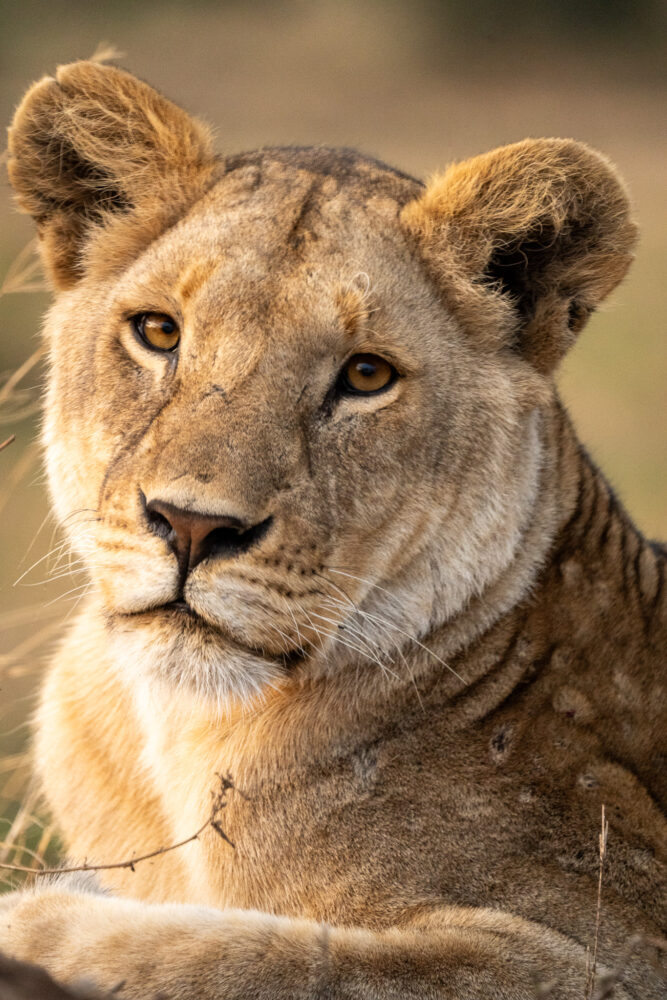
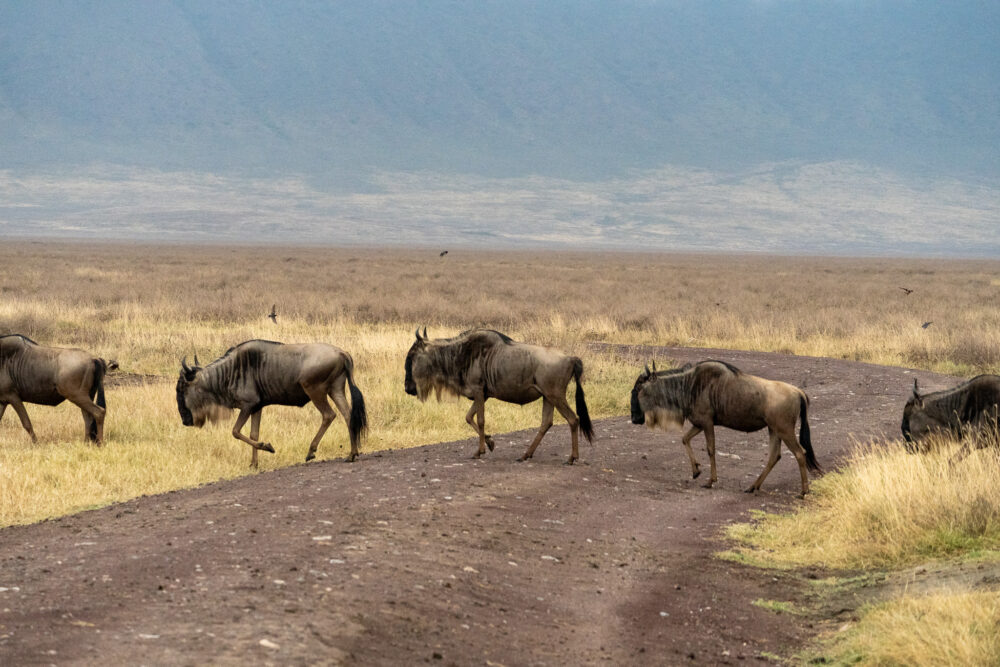
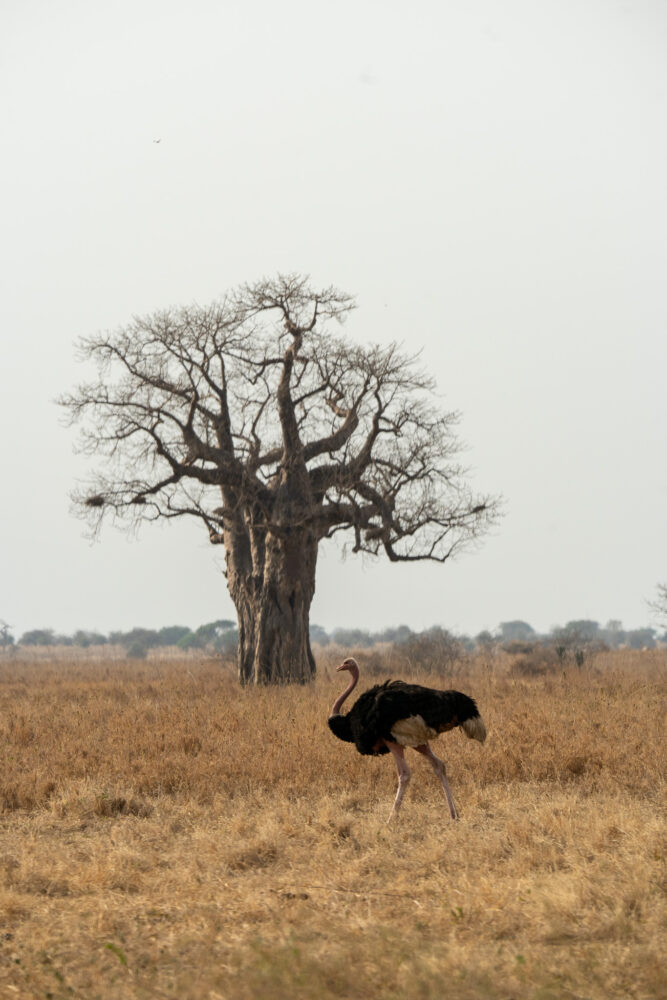
7. Drive no more than 300 KM per day.
Roads are always questionable in East Africa (but, to be honest, not as bad as we thought). You won’t want to travel more than 200-300 on any given day.
8. Know how to change a tire.
Even though our cars both had excellent tread — we got a flat driving in the parks. It’s something you will need to know how to do in case you don’t have service when you get a flat.
9. Oil changes and minor repairs are all done at Shell gas stations.
This is super convenient! But they also will rip you off on price. Be sure to call your car company and ask specifically where to get your car serviced, and let them handle the price negotiations.
Our Self-Drive East Africa Itinerary
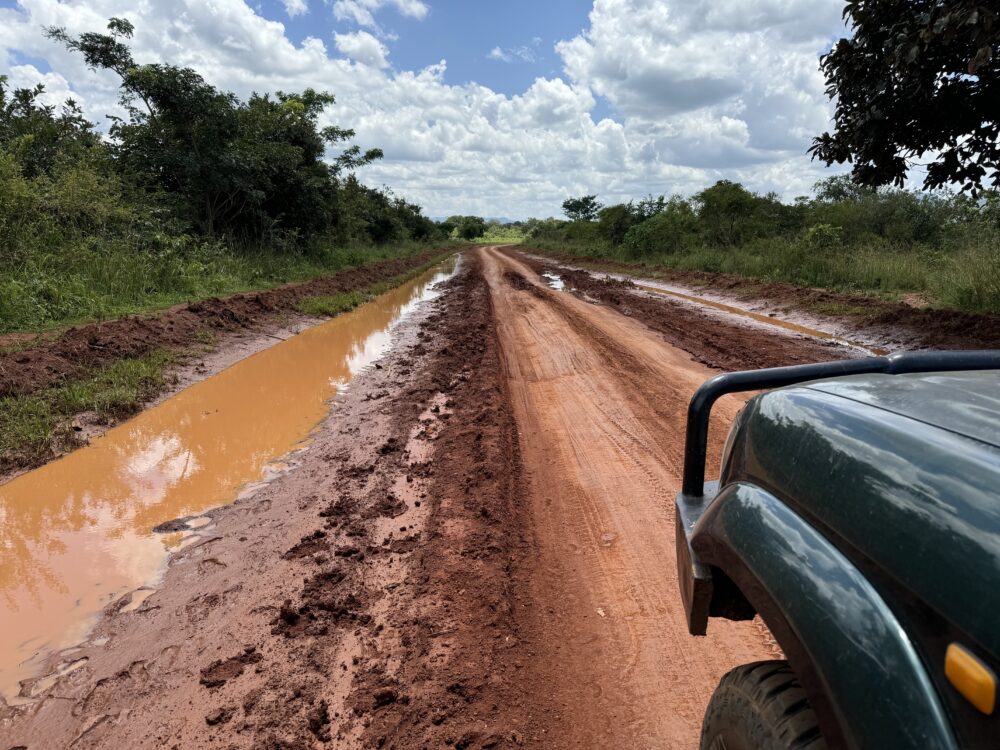
How To Use This Self-Drive Itinerary for an East Africa Road Trip
I’ve written this itinerary so that you can replicate the route day by day. You could conceivably just hit each destination one after another without any days in between if the drive is the most appealing part to you. But you could also just choose the destinations that most interest you and skip over the rest to shorten some time. Or extend your stay in certain areas to explore the national parks more fully. Do keep in mind the drive times that I have listed in between destinations when deviating from the route.
Nairobi, Kenya
Welcome to East Africa. While Nairobi isn’t exactly my cup of tea, it’s an inevitable stop on your journey and a really easy place to get stocked up on groceries and cash while getting acquainted with the car. Take a day or two to get accustomed to the time change and settle into the continent.
Where to Stay: Jabulani Backpackers Hostel
Suzanne, who runs this hostel, is a saint. (Don’t worry, there are private rooms.) She gave us lots of honest advice about Kenya and made us feel really welcome during our stay. She also lets you park your car in her lot for free.
What to Do in Nairobi
- Unseen Nairobi. A rooftop bar & restaurant with an indie theatre showing powerful films you won’t see anywhere else.
- Eat Indian Food. The Mayura Westlands is an authentic and delicious joint near Jabulani.
Hell’s Gate National Park, Kenya
Drive Info: 112 KM, 2.5 hours, tarmac
Stop number one is an excellent test run for your camping gear. Not too far from Nairobi, with no predators and incredible scenery. The public campsite within the park overlooks the whole valley and is one of the prettiest we have experienced in all of Kenya.
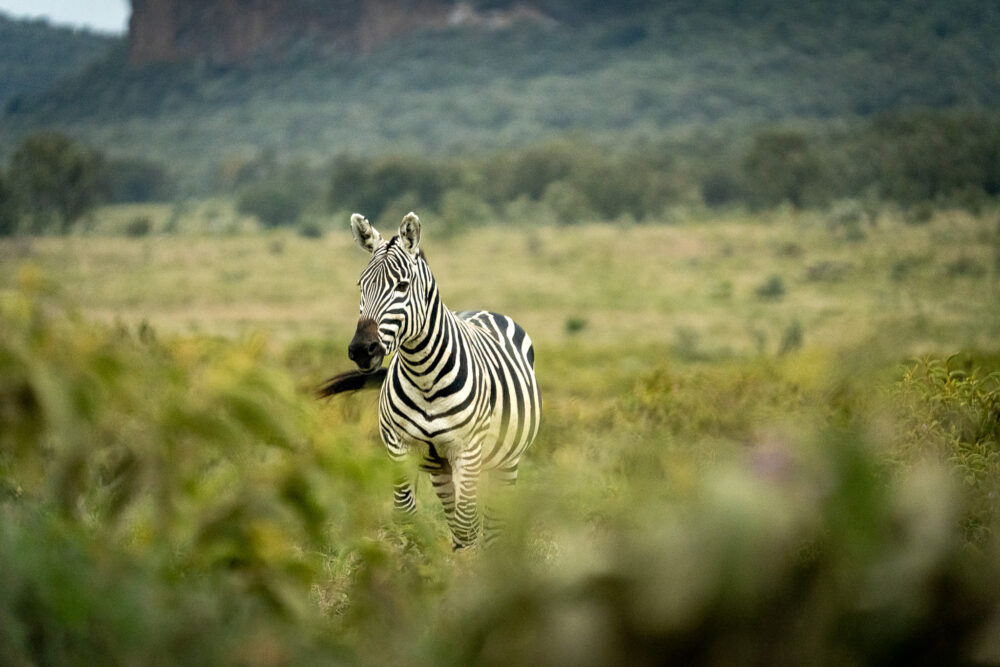
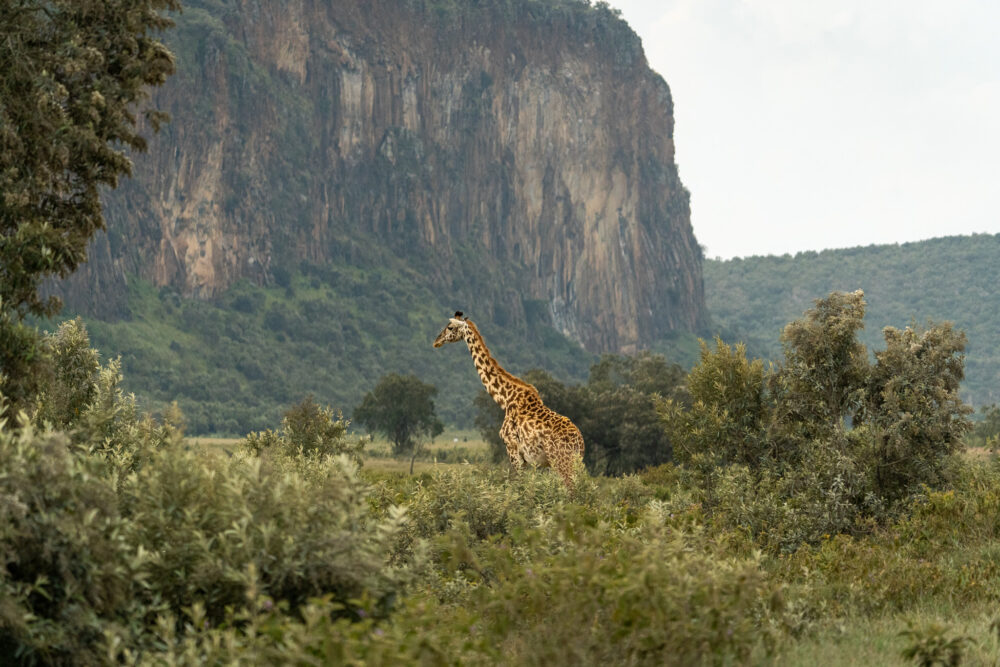
Reasons to Visit Hell’s Gate National Park
- Test out your camping gear in an easy, not crowded, no-predator park
- STUNNING natural landscapes.
- Spot Giraffe, Zebra, Hartebeest, Eland, Baboons, etc.
- Sleep peacefully in one of my favorite camping sites in Kenya.
Kisumu, Kenya
Drive Info: 270 KM, 6-7 hours, tarmac
Kisumu is home to Lake Victoria. Well, one portion of the shores. You’ll want to camp at the Dunga Hill Camp on its shore, where you can get cheap beer and watch for hippos in the early morning. While this is mostly considered a stopover, it was also the first time we ever got to see a hippo!
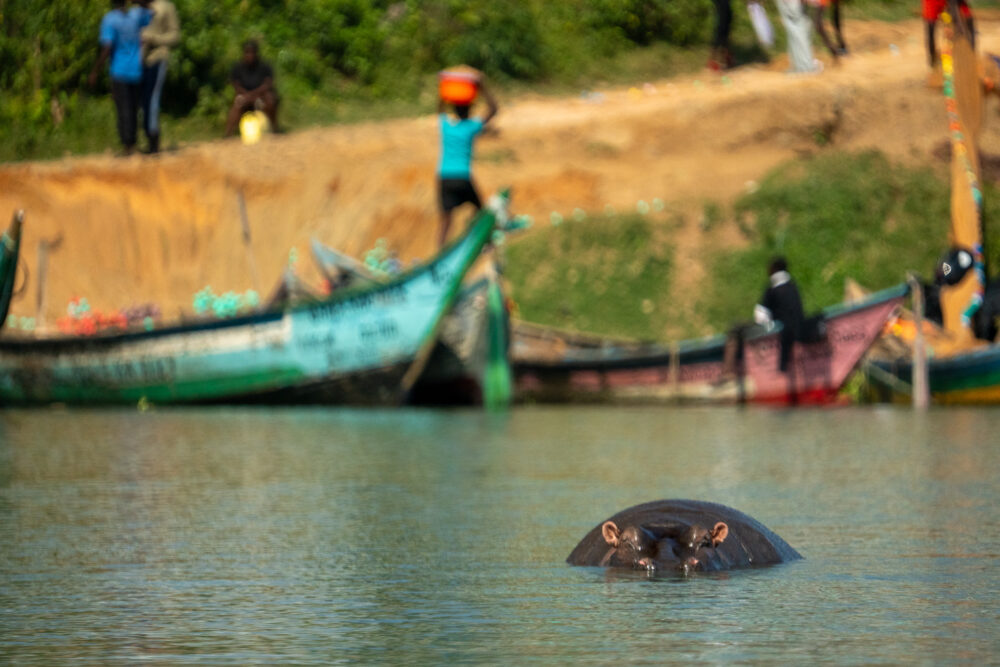
Jinja, Uganda
Drive Info: 240 KM, 6 hours, border crossing at Busia, Tarmac
Rather than repeat all the Uganda info I’ve written…I’ll direct you to Our Uganda Route. Insert the Day 1 Entebbe – Day 4 Lake Bunyongyi here.
Overview of This Leg of the Itinerary (seriously, look at the Uganda Blog Post)
- Spend the Day Doing Jinja Things listed in the blog post linked above.
- Jinja to Entebbe
- Entebbe to Mabamba Swamp
- Mabamba Swamp to Lake Mburo National Park
- Lake Mburo National Park to Lake Bunyongyi
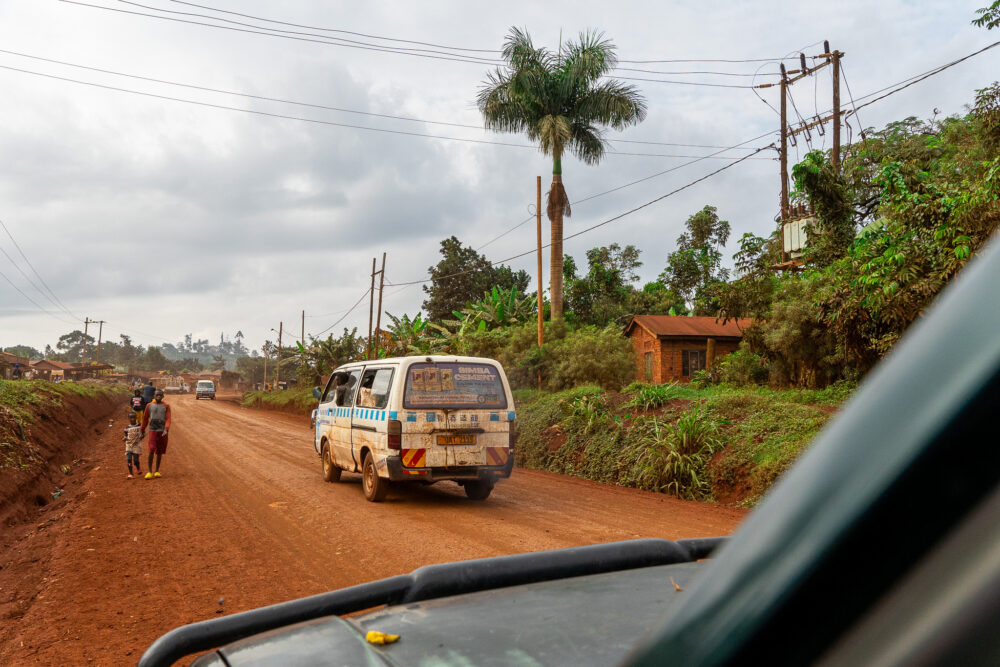
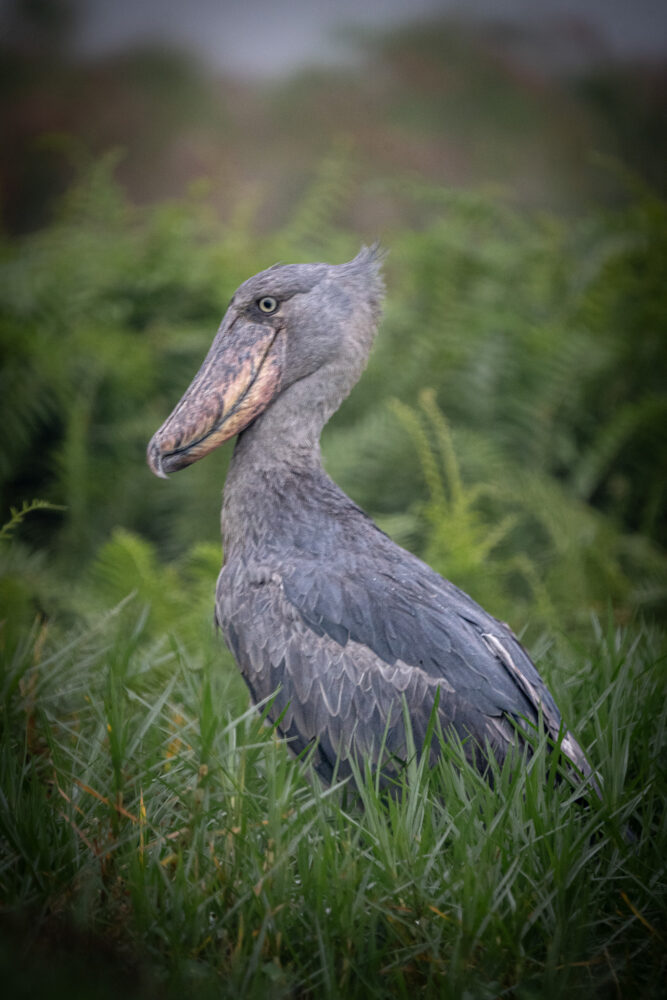
Volcanoes National Park, Rwanda
Drive Info: 90 KM, 2.5 hours, border crossing at Cyanika, tarmac
Volcanoes National Park has tons of options for trekking and wildlife sightings. We did the full-day trek up Mt. Bisoke and really enjoyed the slightly strenuous hike. It’s very doable for those with average fitness as long as you don’t have knee issues since the elevation climb and descent are brutal. You can also choose to go Golden Monkey trekking here. We stayed at Susa Gardens in Ruhengiri and can highly recommend it.
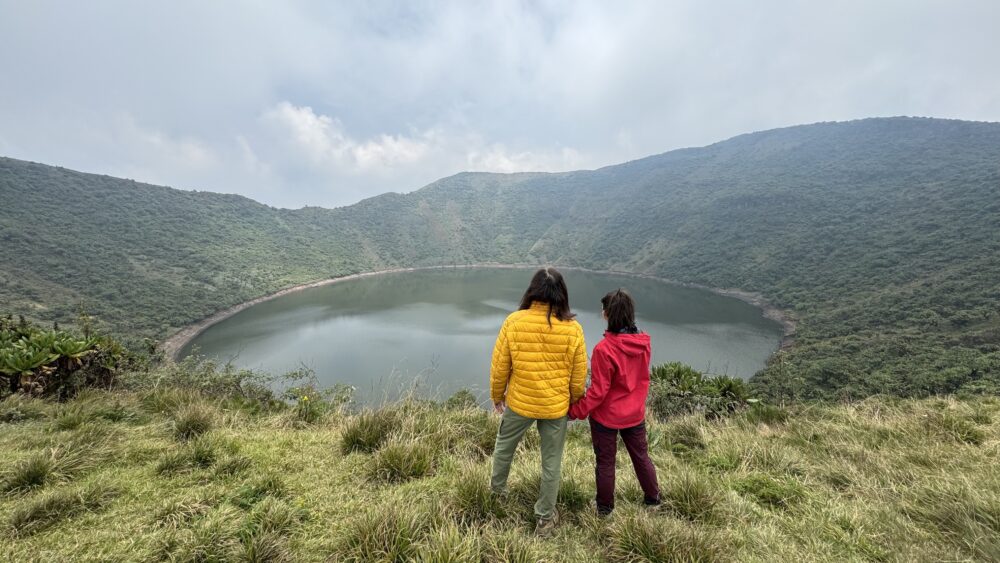
Ruhengiri, Rwanda: Be prepared when you enter Rwanda that working atms are difficult to find. I recommend having USD or Euro to convert at a Forex in town. Also, you’ll be accosted by young boys all over town looking for money, food, or work of any kind. It was super overwhelming and made it difficult to shop. It was not like this in other towns in Rwanda.
I’ll be fully transparent: we did not fully explore Rwanda. Short on time and not overly inspired by the national park here — we chose to skip the next two destinations. But I will include them regardless because so many other travelers LOVE Rwanda, and I’m more than happy to concede that it was just the wrong place at the wrong time for us.
If you want to do any trekking in the national park you will need at least one extra day here.
Day Twelve Lake Kivu, Rwanda
Drive Info: 60 KM, 2 hours, tarmac
A destination we wish we visited but didn’t have time for.
Nyungwe National Park, Rwanda
Drive Info: 200 KM, 5 hours, tarmac
An incredible park that takes you through beautiful landscapes and has chimps! We didn’t visit here, but we would definitely add it on a return visit.
Kigali, Rwanda
Drive Info: 200 KM, 5 hours, tarmac
Kigali is the most modern and well-structured city in this region of East Africa. While I personally liked Arusha and Dar es Salaam more — I see the appeal. While in the city, you must visit the Genocide Memorial Museum and enjoy a coffee at Rubia Coffee Roasters.
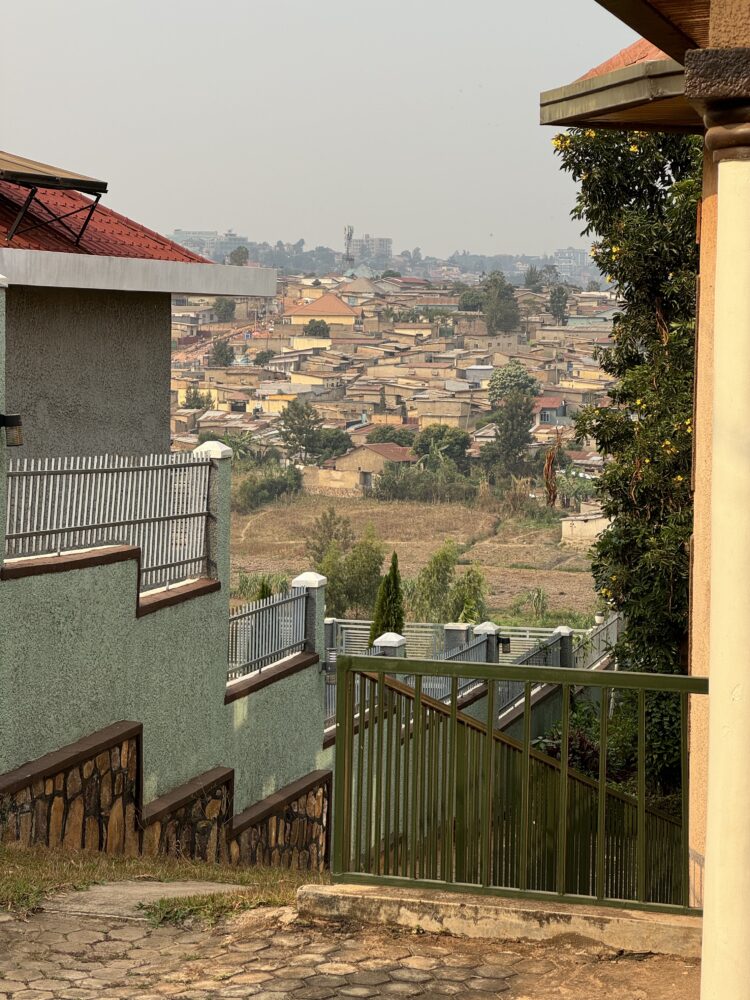
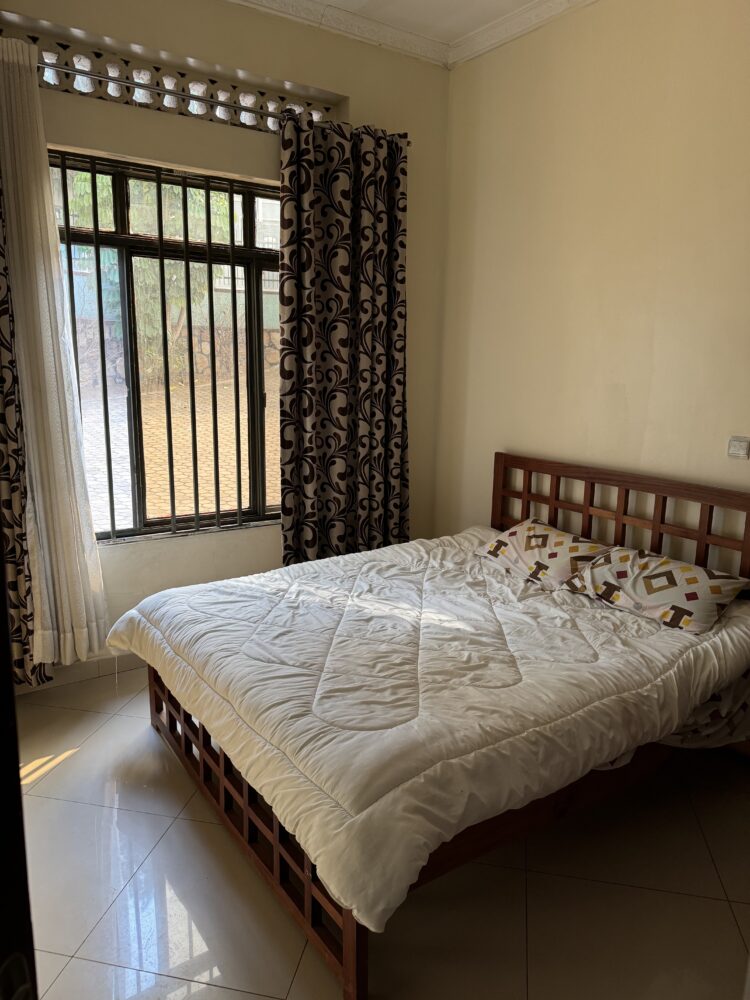
We stayed at a local guesthouse that had cheap rooms and secure parking, as camping was essentially non-existent in the capital city.
Back to Uganda
Drive Info: 170 KM, 6 hours, border crossing at Gatuna, mixed roads
Next, you’ll travel back up to Uganda (starting in Bwindi National Park) to finish the Uganda loop.
Follow Our Uganda Route Day 5 Bwindi – Day 19 Sipi Falls.
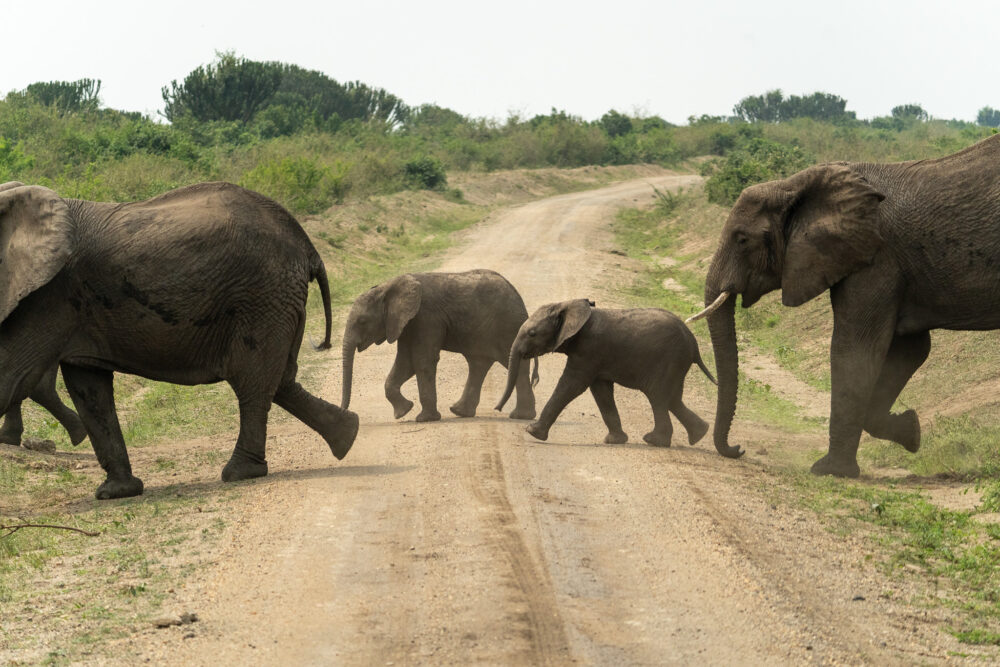
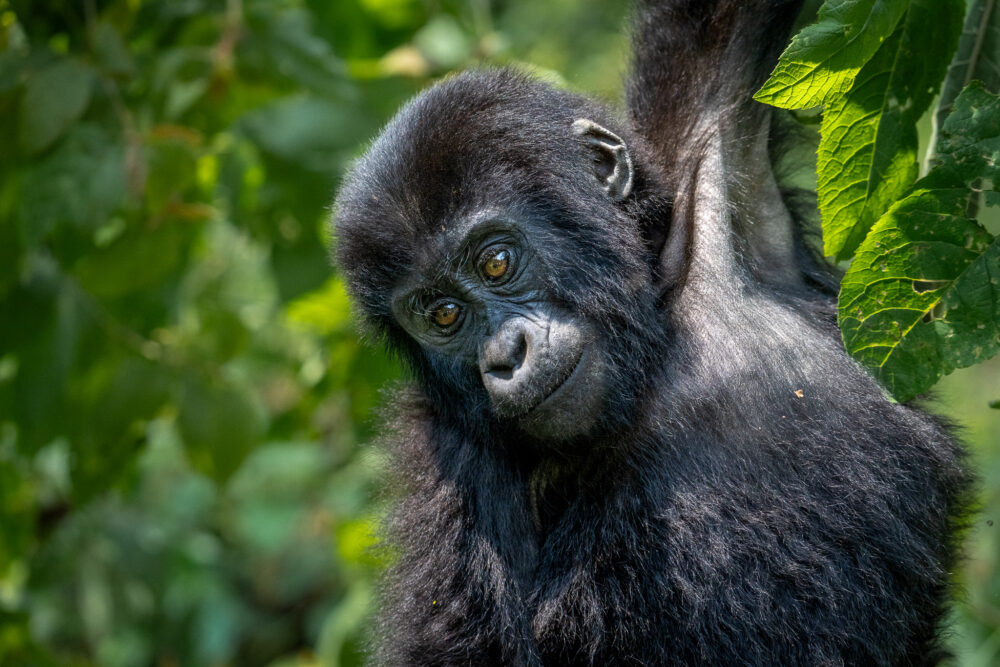
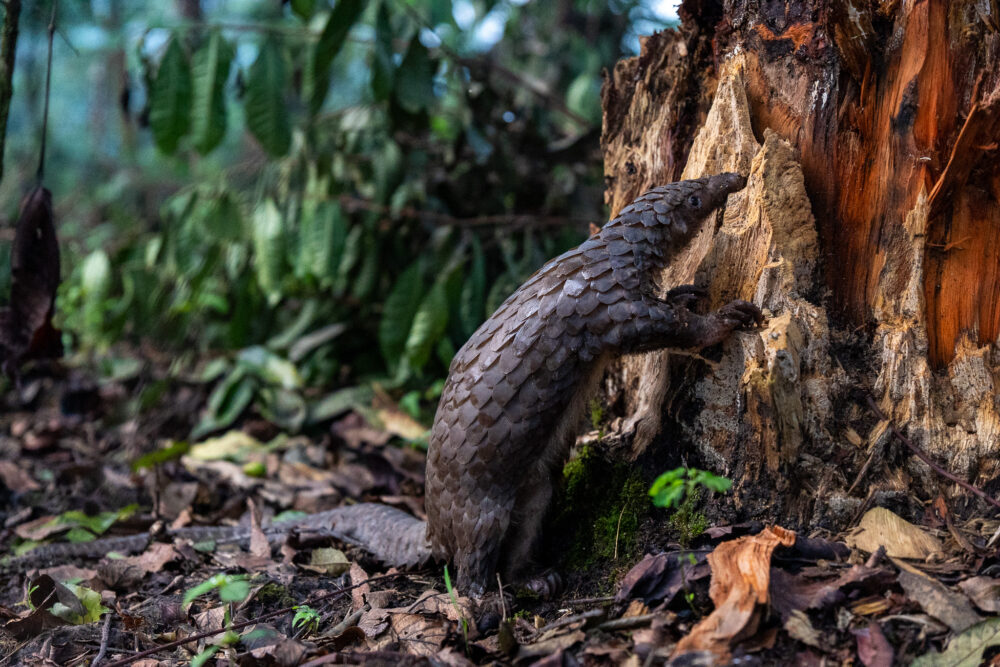
Overview of Uganda Blog Post Route
- Bwindi National Park
- Buhoma
- Queen Elizabeth National Park
- Murchison Falls National Park
- Chimp Trekking
- Kidepo Valley National Park
- Moroto
- Sipi Falls
Read More: Be sure to check out our full guides to self-driving in Queen Elizabeth NP and Murchison Falls NP.
Iten, Kenya
Drive Info: 280 KM, 7-8 hours, border crossing at Kitale, tarmac
After finishing our Uganda loop linked above, you’ll return to Kenya. This little-known route is not the most direct for sure, but it is the most scenic and offers some of the best landscapes in East Africa. It’s well worth the detour. And you’ll get to avoid the A1 roads in Kenya, which are awful with speeding trucks and dangerous drivers.

The road to Iten is totally paved, but not yet on Google or Maps.me. Here’s a photo of the Maps.me turn off, but it helps to have a paper map. We bought this one. It’s much more clear on the paper map. The photo on the left is a zoomed-out version, so you can see its proximity to Kapenguria. The right is a close-up of exactly where the turn is.
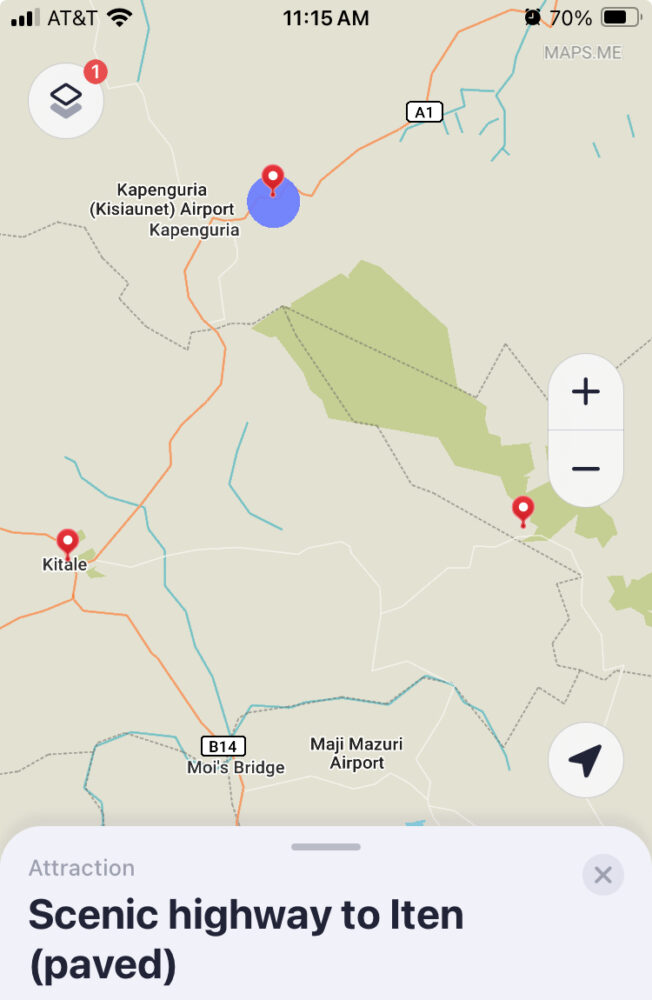
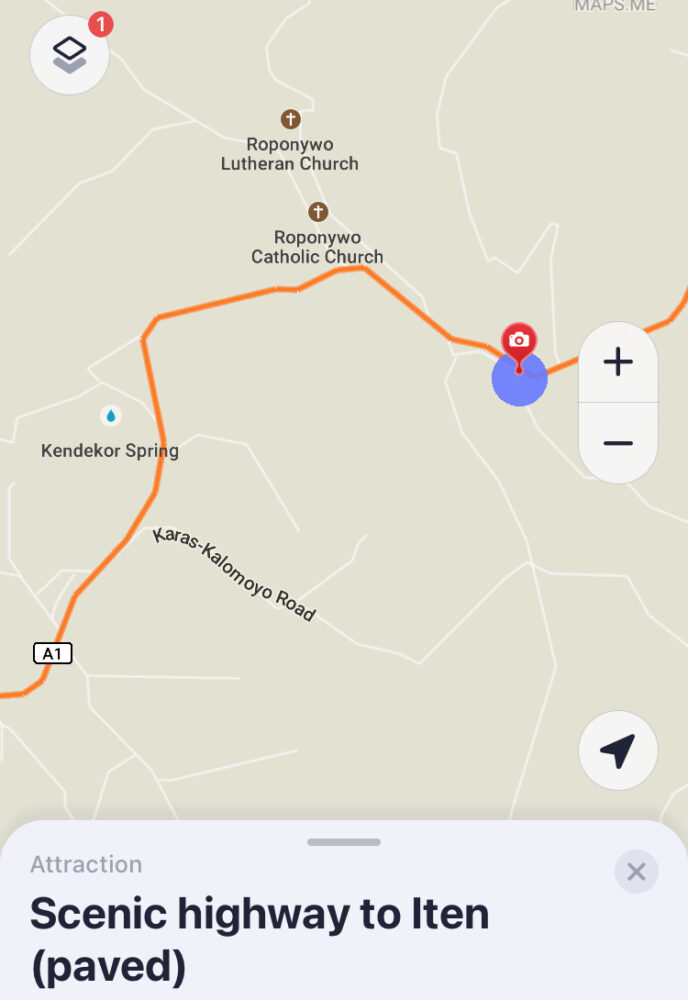
A note on Kitale. This city is usually a necessary stop for gas, cash, and groceries. But forewarning. It’s grim. Not only were we hassled by people looking for handouts, but it seems to have been hit hard by the AIDS crisis, and many people were coming up to us and asking for medicine like I was so kind of doctor just because we were foreign. Limit your time here.
Nyeri, Kenya
Drive Info: 310 KM, 7 hours, mixed roads
This is a much-needed stopover. But one that totally surprised us.

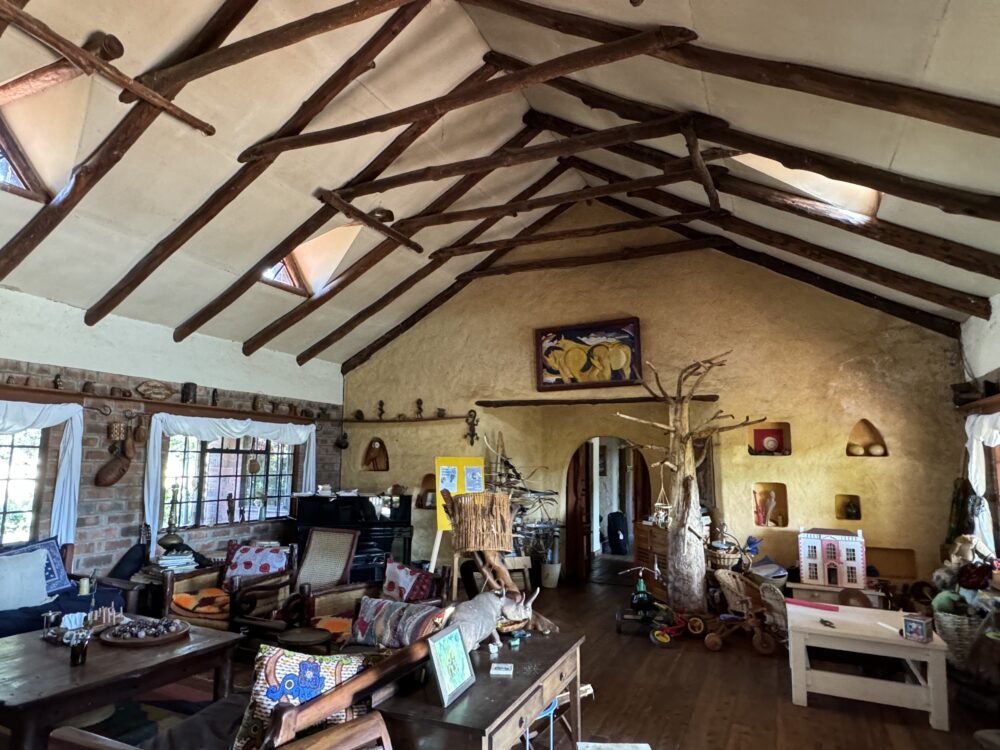
Stay at Sandai Resort. It is an expansive property with a lovely host and a German-style home offering home-cooked meals, wine, and cheap camping. There is loads of wildlife on the property too. If you can make the time, stay an extra day to rest up and just enjoy the amenities here.
Samburu National Reserve, Kenya
Drive Info: 180 KM, 6 hours, mixed roads with several rough road sections.
The fastest way to reach Samburu is all tarmac. But the best way to spot some extra wildlife snakes around Solio Reserve and cuts straight through Borena and Lewa conservancy on the free transit paths. I wrote about this in my Best Places to Spot Wildlife in Kenya Blog Post.
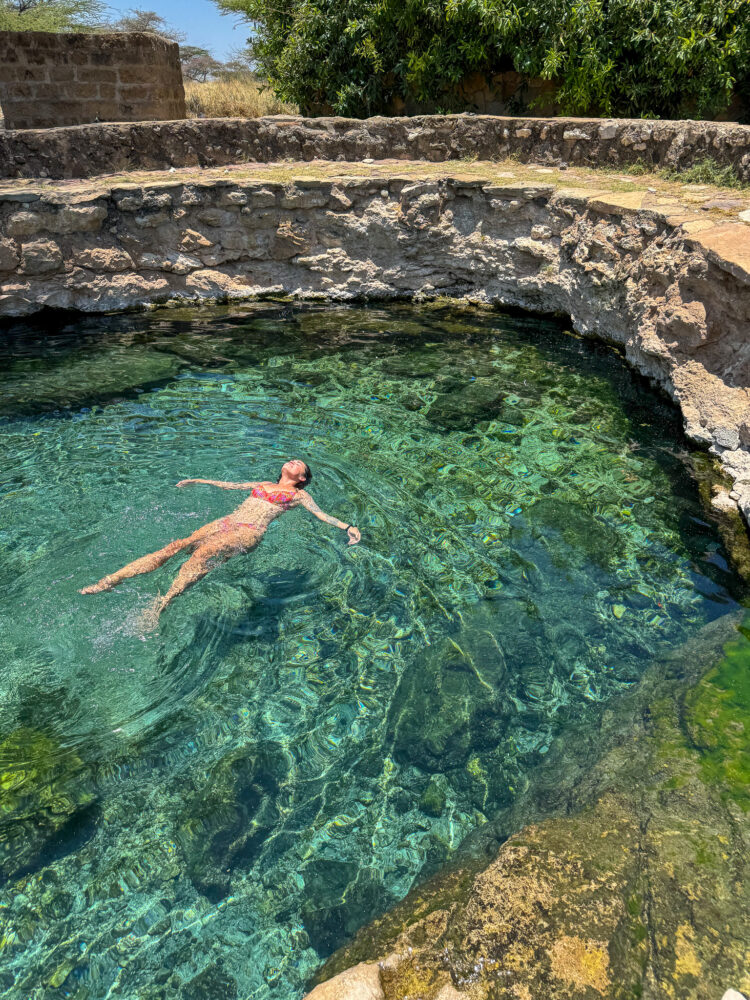
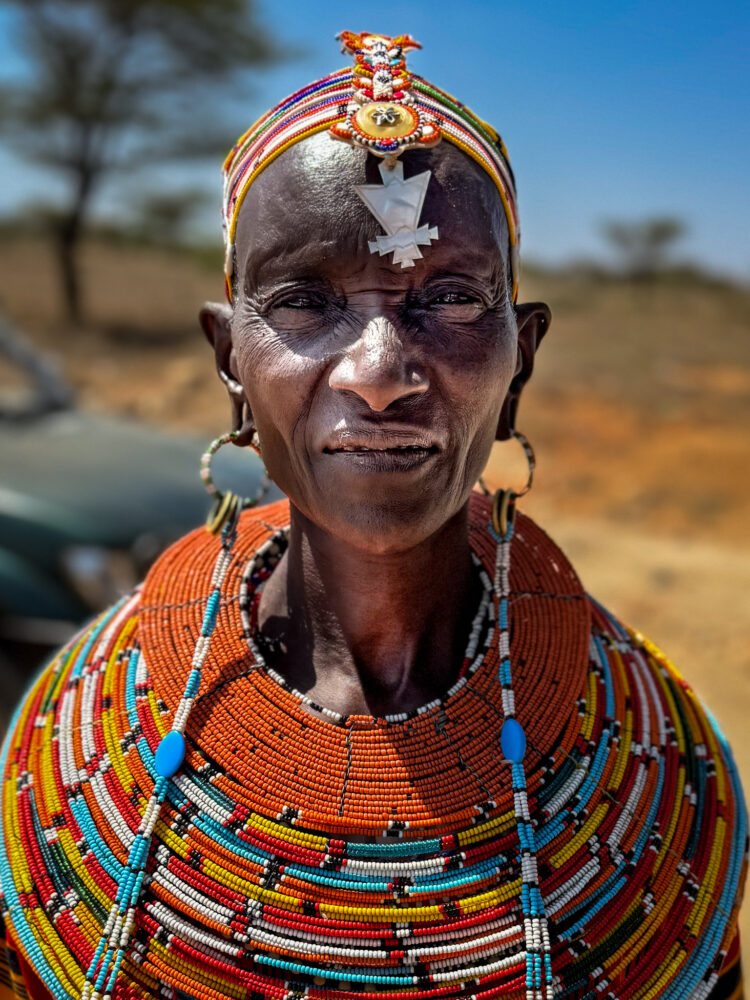
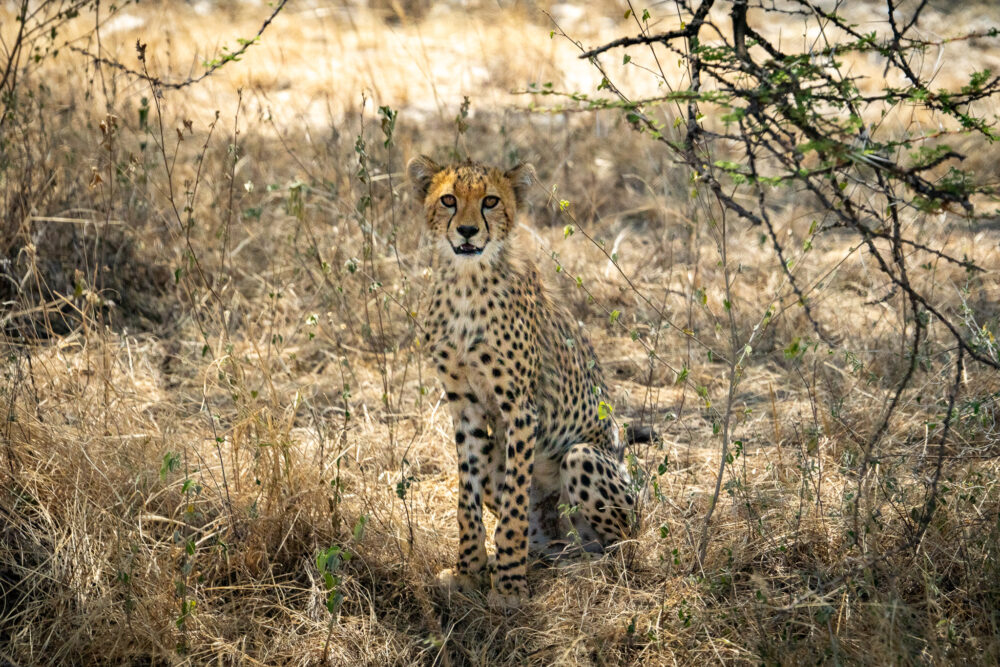
This route has some rough roads. Only take this way if you want to spot wildlife and take your time.
Read More: My Guide to Samburu National Park.
Ol Pejeta Conservancy, Kenya
Drive Info: 145 KM, 3.5 hours, tarmac
Ol Pejeta is my favorite of Kenya’s parks. Particularly if you are interested in Rhino, but all of the Big 5 are present here. Avoid the Northernmost entrance gate. This one is not very central to the wildlife-heavy areas of the park, and the road is poorly maintained.
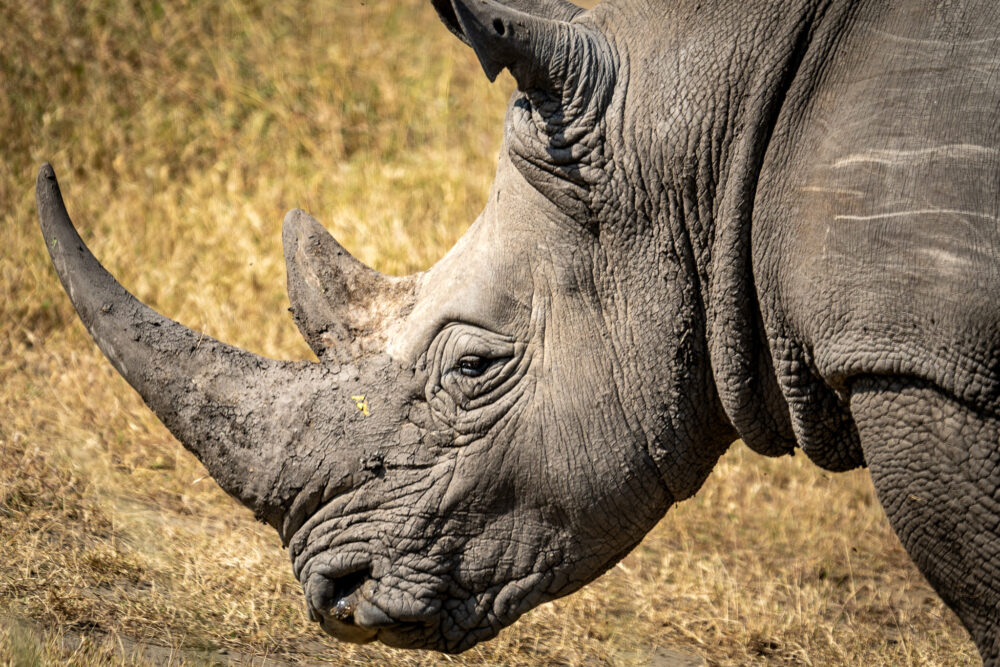
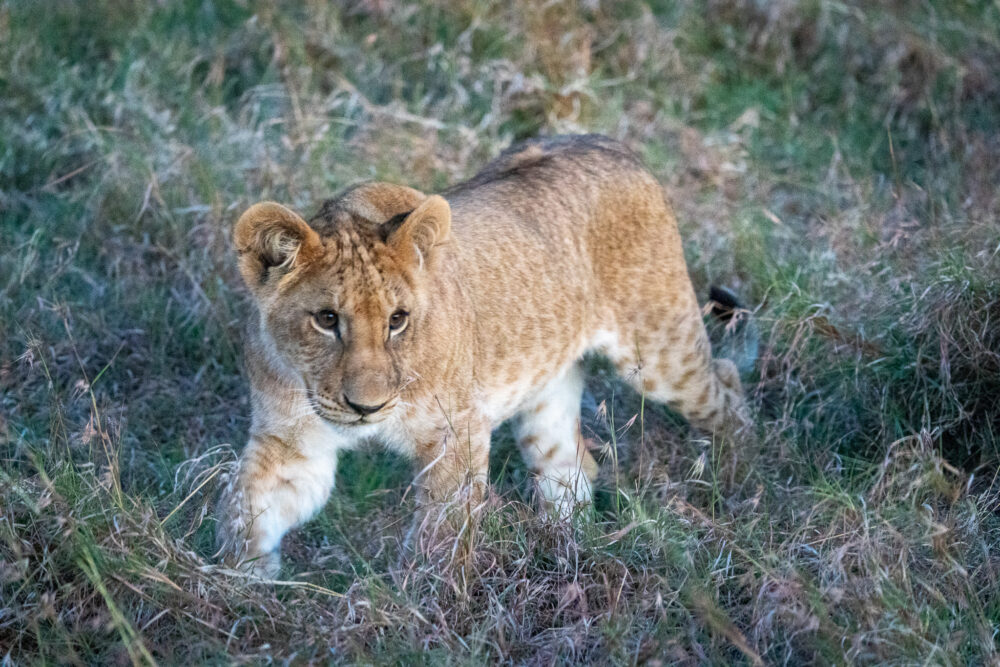
Reasons to Visit Ol Pejeta Conservancy
- Rhino, Lions, Leopards, Elephants, and Giraffe, one of the best destinations for the most sought-after wildlife.
- One of the premiere destinations for conservation…so you’re supporting a good cause.
- Huge park with good public campsites.
Read More: The Best Parks in East Africa for Wildlife.
Nairobi, Kenya
Drive Info: 220 KM, 5 hours, tarmac
Back to Nairobi for a quick stopover and replenishment of supplies.
Amboseli National Park, Kenya
Drive Info: 200 KM, 4 hours, tarmac
We decided to skip Amboseli on our trip. The big allure is large herds of long-tusked elephants and views of Kilimanjaro. As we were going to Tanzania next and had been lucky with elephants, we skipped the park and saved on the $200 per person entrance fee. You could also use this time to take a day tour of the Masai Mara (no self-driving allowed) OR visit Tsavo East, home to a unique red desert landscape, elephants, and man-eating lions.
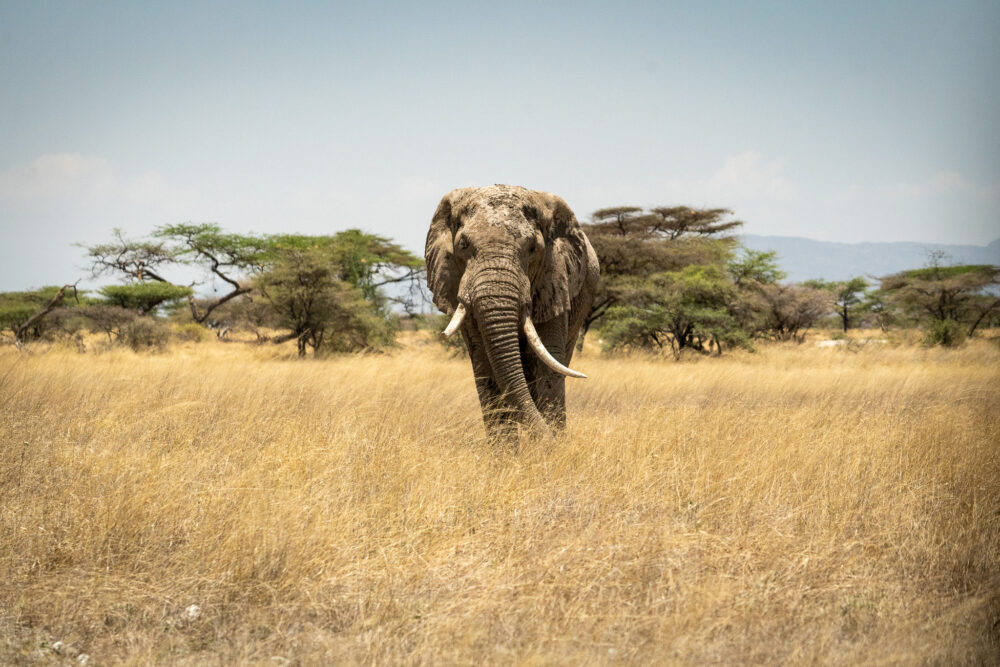
Arusha, Tanzania
Drive Info: 160 KM, 3.5 hours, border crossing at Namanga, tarmac
Welcome to your fourth and final country. My personal favorite on this trip. Although it’s a tight race. Arusha is an excellent starting point for the country and a very modern and comfortable East African city.
For a full guide to Arusha and the following route through Tanzania, please read… Our Tanzania 11-Day Itinerary.
From Arusha, you can follow my step-by-step 11-day Tanzania self-drive itinerary. The only major attraction it does not cover is climbing Kilimanjaro, but you can add this at the end of your East Africa road trip after returning your rental car because of its close proximity to Arusha.
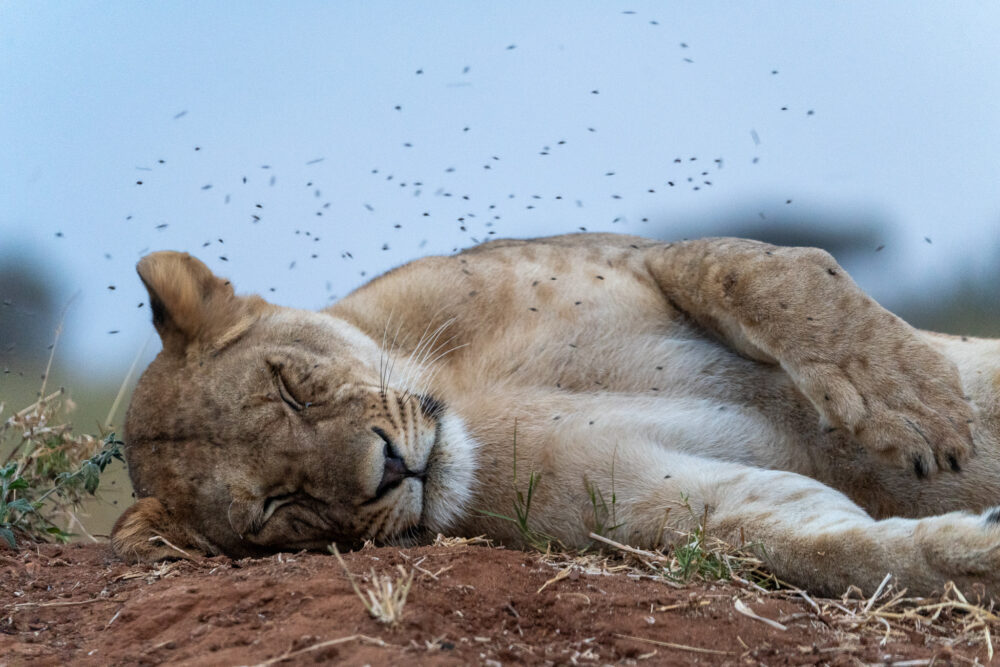
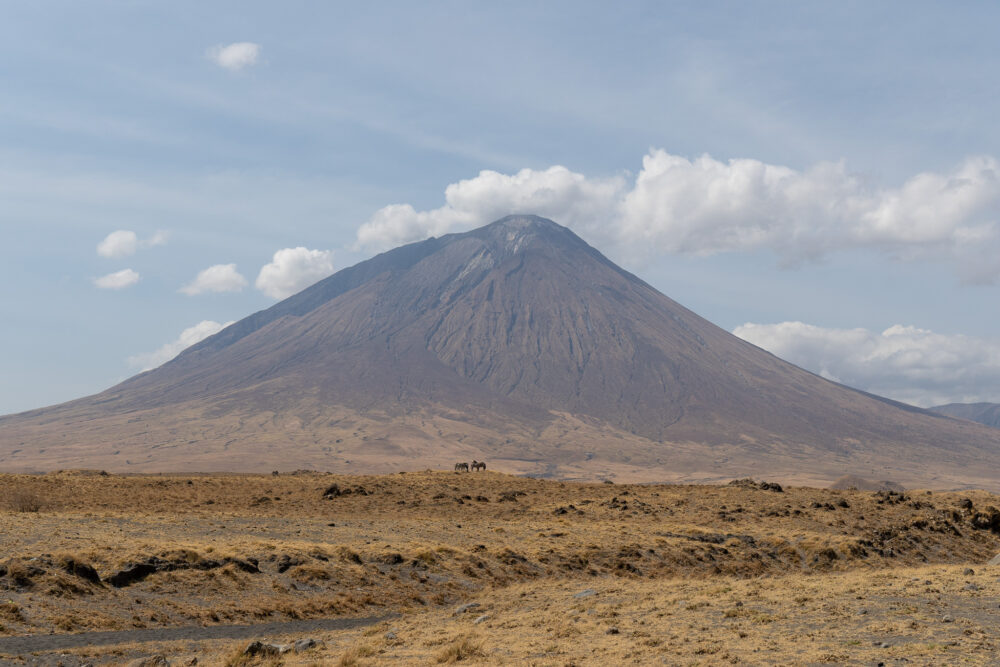
My East Africa Road Trip Map
There you have it. This is the exact route that I recommend self-driving through Eastern Africa on a DIY safari. It begins in Nairobi and ends in Arusha. It covers unique tribal experiences, tons of wildlife, and all the major cities where you’ll want to indulge in culinary adventures. I hope this helps you plan your own route through the region and better understand what exactly is doable regarding drive times and destinations in East Africa.
Save This East Africa Road Trip For Later!
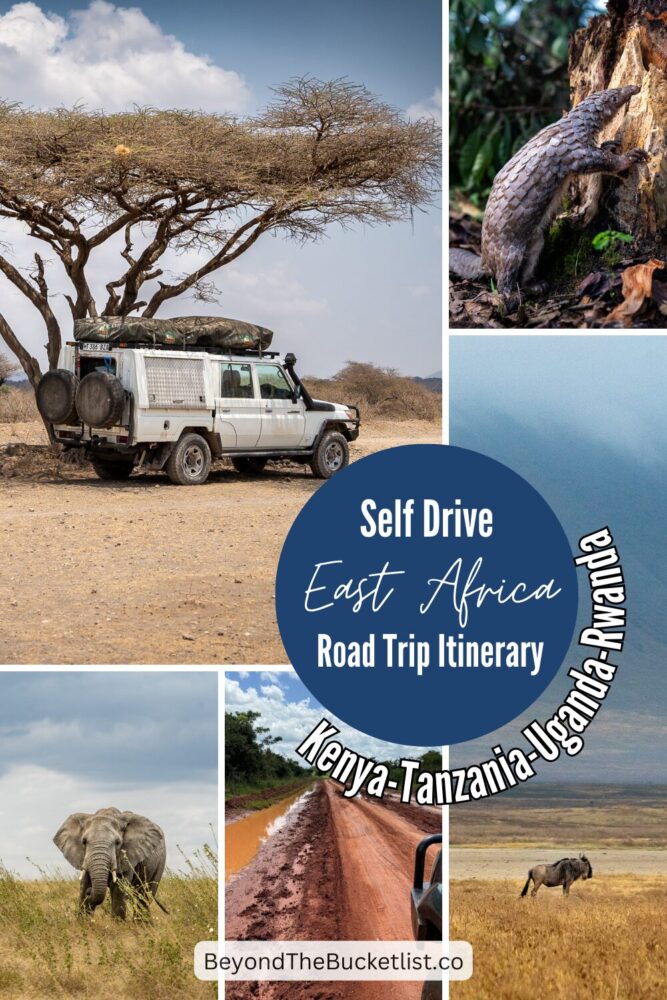

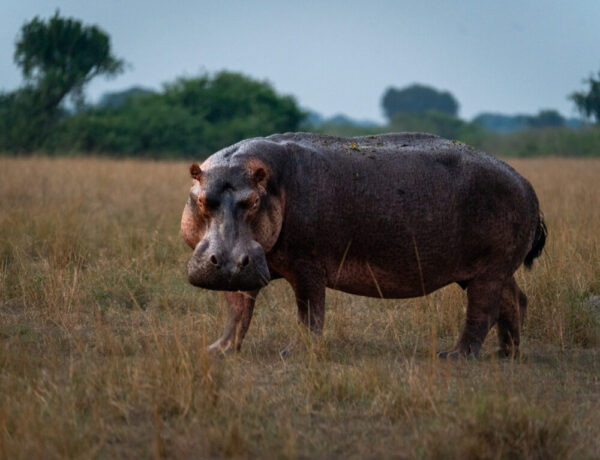
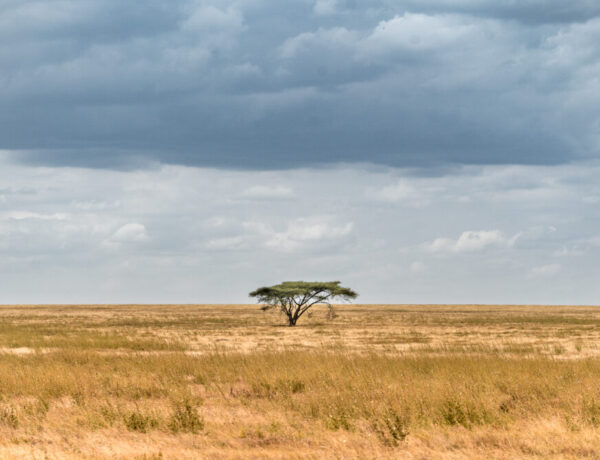
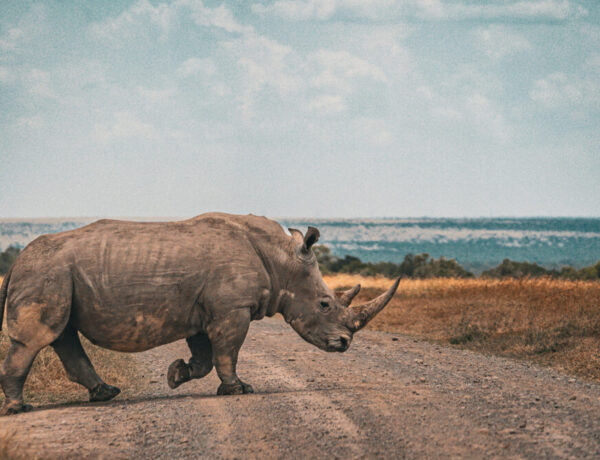


No Comments